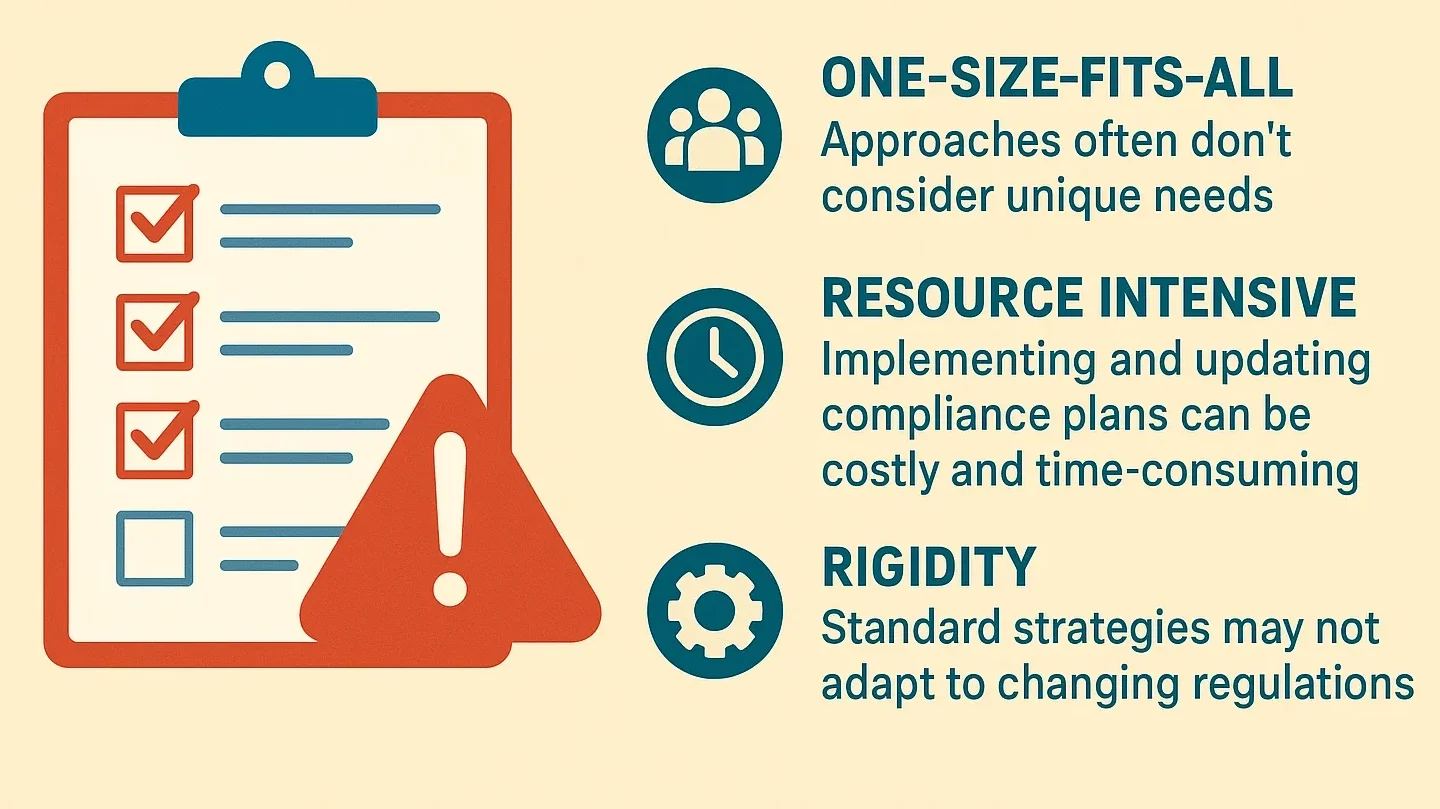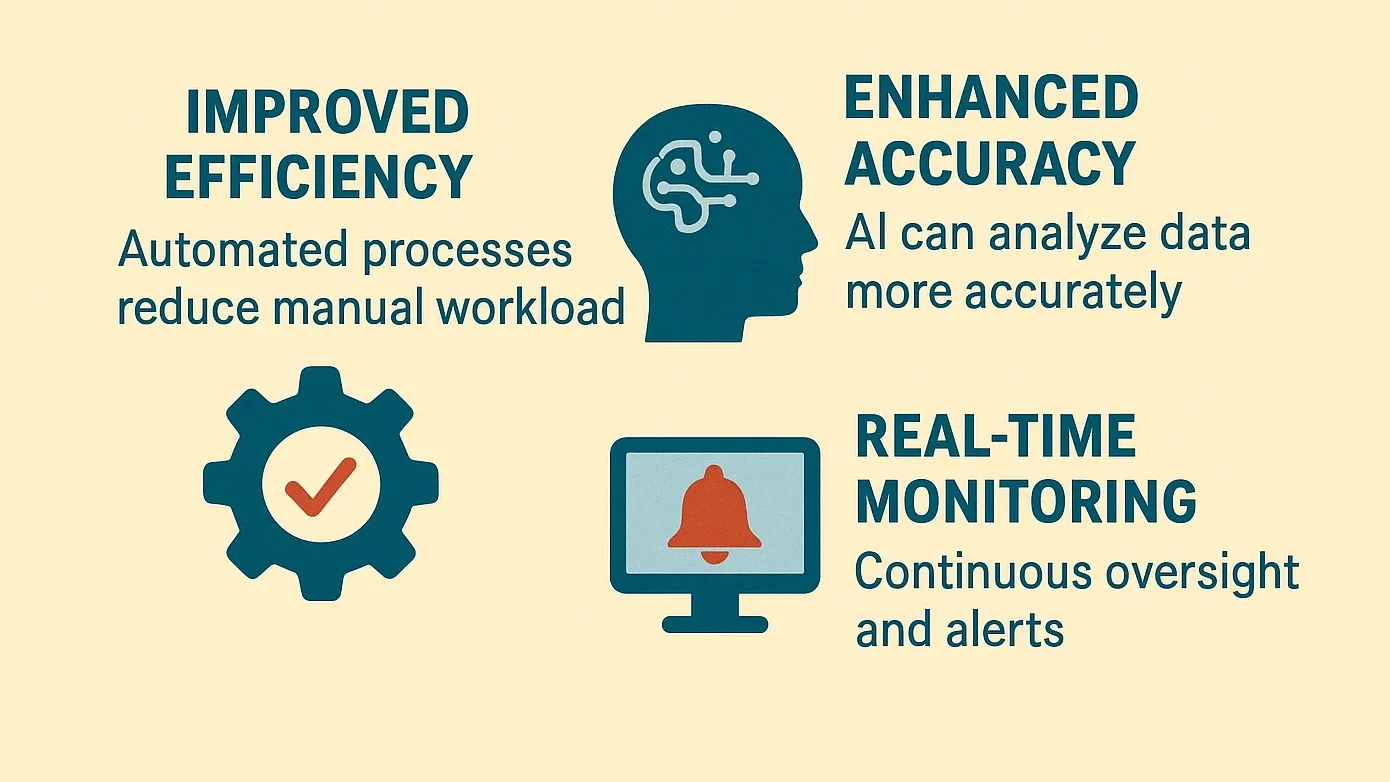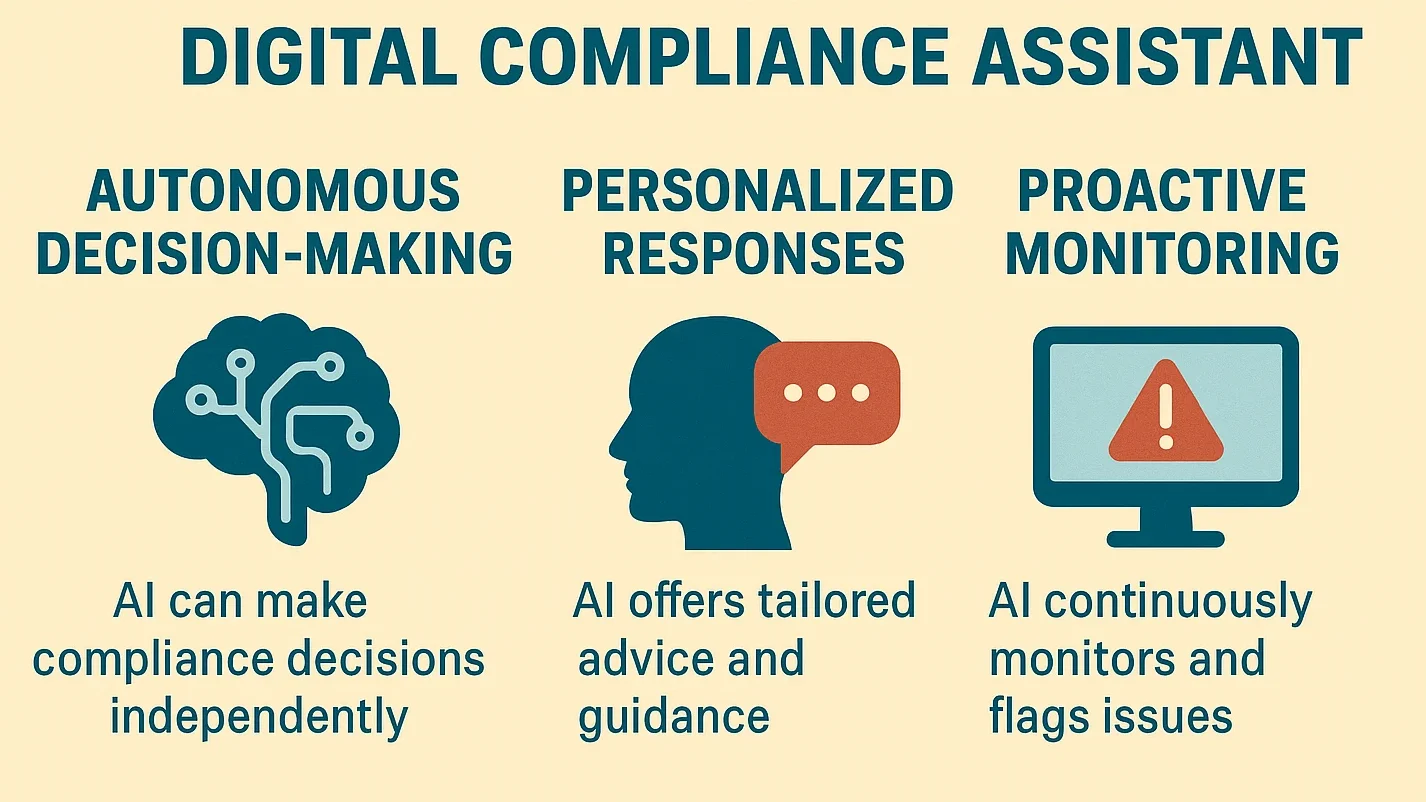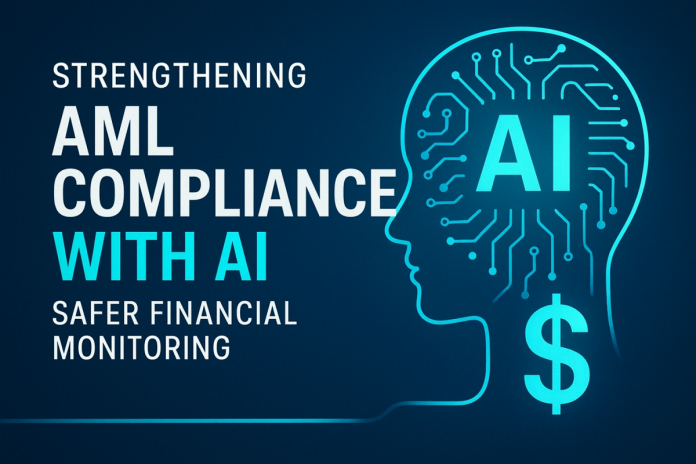Financial crime evolves quickly, with new fraud schemes becoming more sophisticated. Fake identities, cross-border mule networks, privacy coins, and decentralized mixers are used in crypto laundering, which is among the rising types of fraud.
Banks must address both new crime tactics and an increasingly complex regulatory landscape.
This challenging period requires a new approach to address both fraud and compliance, surpassing the widely deployed compliance modalities today, which are primarily based on traditional, rules-based systems.
This is where Artificial Intelligence (AI) comes into play.
The ideal couple would be AI and compliance. It is transforming the way banks and other financial institutions address modern-day challenges, not by removing human judgment but by improving it.
Beyond automating mundane reviews to detect even the slightest behavioural change, AI is shifting compliance and fraud detection from a defensive to a proactive, intelligence-driven role. AI has become an indispensable tool in combating fraud.
Table of contents
The Issue with Standard Compliance Strategies

The institutions must monitor each transaction and conduct proper due diligence on each customer to comply with financial crime laws. But due to the sheer predominance of global economic activity, this is becoming unmanageable through traditional means. The old systems are based on rigid guidelines that may not be sophisticated enough to tell the difference between suspicious and benign activity, and as a result, result in:
- High false favorable rates
- Inefficiencies within the operation.
- Bogged compliance groups.
- Inflating compliance expenditure.
More importantly, such inflexible systems also fail to focus on complex and high-risk cases that require further research. The result? A reactive and inefficient compliance model that has become less and less sustainable.
Artificial Intelligence: A 2017-2018 Adaptive, Smarter Approach to Compliance
AI is a more intelligent and scalable alternative.
Through extensive historical data, AI models can predict trends in legitimate and criminal conduct by involving thousands of variables, a task that fixed rules cannot achieve.
AI systems can:
- Identify minor fraudulent activities and new trends.
- Constantly evolve and enhance based on new data.
- Give more precise priority to high-risk alerts.
- Cut false alarms and maintenance costs.
Not only does AI make alerts more accurate, but it also allows aml compliance service teams to concentrate on what is most important: investigating activity that is really suspicious and being ahead of current threats.
Going to AI-Based Compliance

In the case of banks and institutions, switching to AI can be intimidating. Organizations do it in a staged process, improving what the institutions are already using and creating trust incrementally instead of abruptly replacing old systems.
Below is the three-phase AI implementation strategy
Step 1: Optimize Existing Rules using Data-driven Calibration
Based on the available transaction data of an institution, place a Calibration Module that optimizes the available rule thresholds.
It achieves this by modelling different rule settings and situations, then prescribing the most appropriate thresholds to apply, each specific to certain groups of customers.
It does not fit into a one-size-fits-all solution, and by splitting clients into more homogenous categories, banks and institutions can significantly reduce false positives earlier.
This work provides the background for more intelligent detection everywhere.
Step 2: Improve the Detection using AI-Driven Alert Triage
Deploy AIDa (AI Detection Advisor), a machine learning engine, with an optimized system of rules to predict the alerts that will probably be false positives.
AIDa can achieve this by analyzing and learning from previous alerts, allowing it to reject low-value alerts and focus on truly dangerous transactions smartly.
Employed together with the Calibration Module, this stratified method is highly potent, significantly decreasing alert fatigue and enhancing the level of investigation.
Step 3: Multi-Dimensional Risk Detection Deep Learning
Having laid the groundwork of AI, now is the time to bring in a sophisticated deep learning model beyond the bare rules-based systems of earlier years.
A deep learning algorithm can recognize:
- Behavioural Drift Detection: It can detect when the behaviour of an entity does not follow past trends.
- Peer Group Deviation: It will alert when a customer acts very differently from others in their segment.
- Suspicious Cluster Mapping: It can map suspicious clusters and relationships within financial networks by executing a network analysis.
These insights enable compliance teams to gain a more intelligent understanding of risk, allowing them to identify even complex laundering cycles and hidden financial crime rings.
AI Transparency at Each Step
Black-box solutions will not be satisfactory in a controlled industry. Any AI system applied in credit scoring and fraud detection is prone to strict requirements.
This package of AI safety governance solutions meets all the requirements to be explainable and auditable. It incorporates explainability into all AI-driven alerts, providing plain-language justifications and visual aids such as link analysis and behaviour charts.
An example of this:
- Detailed logs are prepared,which record all the input, output, and model artefacts utilized in production.
- The main reasons for the AI’s final decision are explained in natural language for human review.
- All analytics that complete and contextualize the AI’s decision process are available.
Prior to deployment, we have detailed documentation of the model’s design, methodology, and purpose of use.
In a thorough pre-deployment analysis step, our data scientists simulate the model on the historic bank data, calibrating it to fit the bank’s risk profile and operational conditions.
This will enable the bank to gain a clear and upfront understanding of how the model will function in real-life situations, fostering a sense of trust and accountability from the outset.
The Future: Agentic AI and the Emergence of Digital Compliance Assistant

Since AI capabilities can keep on advancing, the next significant innovation is agentic AI.
These intelligent systems can function as digital compliance aids, not just as question-answer systems. They can consume large volumes of data, independently query or analyze challenges, and formulate plans while taking action.
In the compliance world, this may appear as:
- Pulling data, both internal and external.
- Producing a detailed account of suspicious activity.
- Communication between rules, models, and workflows is independent.
Suppose that an AI agent receives an alert message because the transaction monitoring system flagged a particular entity. Immediately, it creates a complex investigation, collecting and integrating internal and external data.
The agent does not just make superficial checks. It can independently examine the outputs of associated rules and models, historical warning signs, and patterns of transactions over the long term. At the same time, it queries external data sources like news articles or open databases to identify any other background that may enlighten the case. What is obtained is a comprehensive, context-sensitive story that sheds light on the most complicated situations, saving human investigators a lot of time and effort.
Suspicious Activity Report (SAR) can be a simple click, too, when it comes to filing one. The agent can produce a comprehensive, organized write-up that includes all pertinent findings and knowledge, enhancing the quality of the reporting process.
All from a single user query.
The agentic AI will liberate human officers, allowing them to shift to strategic oversight positions. They are then able to apply their expertise to high-value decision-making instead of the time-consuming reviews. It will transform the compliance world by enabling banks and other institutions to work faster, accurately, and at scale.
Conclusion
The issue of financial crime and the complex nature of regulations imply that banks and institutions cannot remain stagnant; they must evolve with the times.
The answer is AI, which revolutionizes old systems and represents the future of how institutions will handle compliance and fraud control. Conformity does not necessarily have to be a burden. It is a strategic asset with the appropriate AI strategy.











